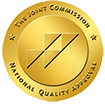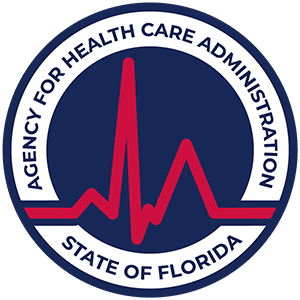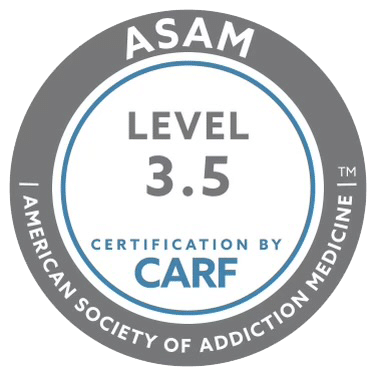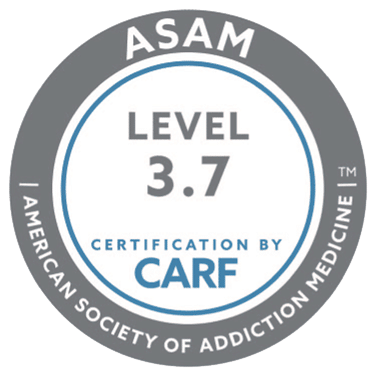Admissions process
We’ve made our admissions process simple and easy so that you can receive an instant verification and assessment of your situation.
START HEALING FROM ADDICTION
Our admissions process is as easy as 1-2-3 so that addicted men and women can begin their treatment program and be on the road to recovery without delay.
EASY 3 STEP ADMISSION PROCESS
Step 1

Confidential Evaluation
We go over what you or a loved one are going through, and how Recreate Behavioral Health Network can help.
Step 2

Free Insurance Verification
This is where we verify your insurance benefits to find out if you’ll have any out-of-pocket expenses.
Step 3

Intake Assessment
During the assessment, we determine and recommend the appropriate level of care and prepare your loved one for admission.
Verify Your Addiction Treatment Coverage
It’s time to stop the endless cycle of addiction and relapse.

Our Rehab Centers Facilitate Recovery

We've Helped Hundreds of Families

Caring & Experienced Treatment Team
24/7 Confidential Treatment Helpline
Your information is kept private and fully protected under federal and HIPPA guidelines. Please click here to learn more.
In 2022, the National Survey on Drug Use and Health estimated that only 0.8% of adults with a substance use disorder sought treatment. Meanwhile, 4.5% agreed that they needed treatment but never got it.
There are a lot of barriers that contribute to this discrepancy, keeping people from getting the help they need and deserve, from stigma to rough financial situations. Dreading the admission process shouldn’t be one of those issues, though.
Read on to understand how drug rehab admissions work and how to prepare for the entire process.
Overview of the Admission Process at Recovery Behavioral Health
At Recreate Behavioral Health Network (RBHN), we understand that taking the first step in the long recovery journey is never easy.
After all, there are a lot of concerns about how hard detox might be and more. We’ll address these challenges in detail later and share some insights that’ll ease your mind.
For now, let’s check out an overview of our three-step admission process.
- Initial Evaluation: Helping you find a substance abuse treatment program that’s best suited for your needs.
- Insurance Policy Verification: Making sure your insurance plan covers the treatment. We work with a wide range of companies, including Aetna, Meritain, Beacon, Magellan Health, GEHA, CareFirst, and more.
- Intake Assessment: Understanding your history better to personalize the treatment plan and level of care.
What to Expect From the Typical Rehab Admissions Process
Despite the relatively simple process, some people feel a little overwhelmed and don’t know where and how to get started.
Let’s dig deeper and check out what the admissions process is like, from start to finish, and what to expect in every step.
1. Getting in Touch With the Staff
There are a few different approaches to getting the admissions process started. For one, some patients admit themselves into the rehab program.
In other cases, we get contacted by someone from the patient’s family or friends talking on behalf of their loved one.
Remember that it’s not easy talking to an addict about their substance use disorder. However, there are plenty of resources that can help you navigate this difficult conversation with compassion, adequate research into the treatment options, and some healthy boundaries.
Of course, admissions can also start as professional referrals from social workers, drug counselors, or even people in employee assessment programs (EAPs).
These professionals get in touch with our admissions team at RBHN when they think their client needs help with substance abuse disorders. Then, we work together to manage the paperwork, health insurance benefits, and logistics.
Either way, by the end of this step, someone (a professional, a family member, or the patient) will have contacted the rehab facility. At RBHN, you can get in touch with our team through email, text messages, phone, or live chat—whatever feels easier to you.
2. Pre-Intake Screening
Once the contact has been made with the facility, the initial evaluation (sometimes called pre-intake screening or pre-screening) will start.
Regardless of the name, this step is all about setting a framework for the treatment journey and finding out if the programs at the facility are a good fit for the patient.
So, the admissions staff will want to know about the drug abuse history, physical limitations, current medications, and any underlying conditions that might affect the program or require specific accommodation.
Expect to be asked for general information regarding employment conditions, family life, legal concerns, and so on.
When all that’s done, the team will also walk you through the insurance options and payment methods. Then, they’ll let you know when you can come in to complete the admission.
3. Packing for Rehab
Before you hang up, make sure to ask the rehab representative if they can provide a packing list.
Note that the policies at each addiction treatment facility are different, and many are considered strict. Facilities might not allow you to walk in with food, unapproved OTC medications, video games, cleaning supplies, or even sporting equipment.
Keep in mind that some insurance companies don’t cover personal items (socks, toothpaste, etc.). So, ask which toiletries, snacks, and essential services are included in the admission pack and covered by the plan as well.
4. Travel Arrangements and Making Your Way to the Facility
If patients are lucky enough, they’ll find a facility nearby and get a family member or a friend to drive them there.
Yet, sometimes, patients have to fly over to the rehab center. If that’s the case, don’t hesitate to ask if a staff member can meet you at the airport. Many facilities will be happy to send someone.
5. Physical Evaluation
Before patients officially start the rehab program, odds are, they’ll go through one more evaluation. But this time, it’s going to be in person rather than on the phone.
This step might change from one facility to the other. But, generally speaking, you can expect the following:
- Checking vitals
- Evaluating mental health (for dual diagnosis patients)
- Completing a drug screen (urine analysis, breathalyzer, and blood work)
- Filling up the family medical history
This can help the professionals at the facility craft a personalized treatment plan.
It’s worth noting that the American Society of Addiction Medicine (ASAM) sets criteria for patient placement, transfer, and discharge. This assessment criteria is applied across several states, and it takes into consideration several dimensions of the substance use disorder.
We’re proud to be ASAM certified at level 3.5 for clinically managed adult residential programs.
6. Starting the Addiction Treatment Program
By this point, the main admission steps are technically done, and the patient can begin the long-term recovery process. However, the treatment team will still try to ease the transition over the first day or two.
After newly admitted patients get settled in, the staff members will introduce themselves and maybe even show them around.
Depending on whether the patient needs medical detox and how they’re feeling, they might even get to sit down for a therapy session. But in most cases, the team will understand that some people need space on day one.
How to Help a Loved One Get Ready for Rehab Admission
It’s not uncommon for addicts to struggle with the admission phase or even get cold feet. Still, it’s a positive sign that your family member, partner, or friend is open to getting help.
Here’s what you can do to make the admission process easier for them:
- Get Educated. Read up on the complexity of addiction as a disease and the different types of treatment programs (residential, outpatient, and partial hospitalization).
- Consult a Healthcare professional. If online research isn’t enough, contact a professional and ask about addiction, withdrawal, and treatment options.
- Talk to Your Loved One. Share your findings, discuss treatment goals, and talk about how the rehab can help. Let them know you’ll always be there.
- Assist with the Practical Tasks. There’s a lot to tackle before admission, from packing to handling travel arrangements. Offer to take a few tasks off your loved one’s plate.
That said, family involvement goes a long way in helping recovering addicts maintain sobriety. Your support shouldn’t stop after encouraging your struggling friend to go to rehab and driving them to the facility!
There’s a long road ahead, and you can keep up the support by offering to take on tasks like pet sitting, providing rides, and helping with childcare.
3 Common Concerns With Drug Rehab Admission
While many substance abuse treatment facilities nowadays have streamlined admission processes, there are still some hiccups to expect.
Here are the common concerns among patients considering rehab:
1. The Waiting-List Barrier
Sometimes, the admission takes a while, but not all patients have the luxury of waiting a couple of days.
If you’re worried about life-threatening relapses of intense withdrawals, look for facilities that take in same-day admissions. This way, you (or your loved one) can get into the detox protocol right away.
2. Dreading the Detox Phase
It’s not uncommon for people to dread the detoxification process so much that they avoid or delay the admission altogether.
While it’s true that going through withdrawals is hard, professionals at the detox facility will try to make the process as tolerable as possible by managing headaches, chills, and cravings.
Plus, as challenging as it might be, medical detox is generally safer than unsupervised home detox. It’s also a shot at a clean start, so don’t let the fear of being uncomfortable for a while hold you back from getting the recovery journey started!
3. Wondering About the Negative Consequences
Unfortunately, some people don’t get help because they’re scared that going to rehab will affect their careers in the long term.
If you’re concerned that future employees might turn you down, consider reading more about how the Americans with Disabilities Act (ADA) protects recovering addicts and alcoholics from discrimination.
Final Thoughts
Recovery is a long journey that doesn’t stop once you’re out of rehab. You’ll have to work aftercare, 12-step meetings, and ongoing therapy into your life for years to come.
But you’ve got to start somewhere. Realizing you need help and considering admittance to a certified facility is a good first step.
So, don’t hesitate to get in touch if you have any questions about the process, paperwork, insurance coverage options, or treatment plans.







